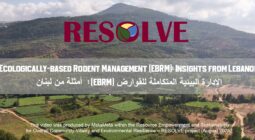Regenerative Agriculture
Regenerative Agriculture is being rediscovered as prime way of doing farming: creating higher yields and healthier products; generating job opportunities in intensive farming and agri-services and ensuring the sustainable use of our natural resources. Regenerative agriculture looks beyond merits and shortcomings of a singular approach; it rather acknowledges the diversity and tailors this to the objectives of each farm or farming community.
The following strongholds of regenerative agriculture can be identified. Improving soil health – holistically improving soils with additional carbon, thriving micro-biomes, and structures able to absorb and retain air and water. Climate change adaptation and mitigation – maximizing carbon sequestration and building up the resilience of the farm (water buffering, diversification, micro-climates). This is complemented with ecological restoration, biological and ecological pest management, watershed conservation and furthermore relates to the wellbeing of the farming community.
Blogposts
More >Videos
More >Dossiers
- Landscapes and Local Climates
- Knowledge Repository for GFFA 2026
- Soil Management
- Green Transformation
- Green Roads for Water
- Dryland Development
- Regenerative Agriculture
- Livelihoods from Floods
- Locally-Led Adaptation in Practice
- The underground drought
- Water and Development Partnership
- Preserving Assets - Operation and Maintenance in Delta’s
- Is the world getting saltier?
- Water integrity
- Water Productivity
- Managing Desert Locusts
- None left behind
- Mega Irrigation
- Uncategorized







